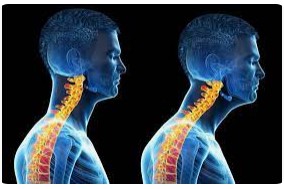Improving Posture to Alleviate Vertigo: A Comprehensive Guide
Posted Under: Meniere's Disease Triggers & Causes,Uncategorized
Table of Contents

Vertigo is a condition characterized by dizziness and a sensation of spinning or tilting. It can have a significant impact on one’s daily life and activities. Vertigo can be the most debilitating symptom of Meniere’s disease. While there are several treatments available for vertigo, improving posture is often overlooked as a potential remedy. In this article, we will explore the connection between posture and vertigo and provide tips for improving posture to alleviate vertigo symptoms.
The Link between Posture and Vertigo
Research has shown that poor posture can contribute to vertigo. Misalignments in the neck and spine can lead to imbalances in the inner ear and result in dizziness. Additionally, slouching and hunching over can reduce blood flow to the inner ear, exacerbating vertigo symptoms.
The inner ear is responsible for our sense of balance and contains structures known as otolith organs and semicircular canals. These structures contain small, fluid-filled sacs and canals that detect the movement and position of the head and send this information to the brain.
When the neck and spine are misaligned, it can affect the position and movement of the head, which can cause the fluid in the inner ear to move in abnormal ways. This can send confusing signals to the brain about the position and movement of the head, leading to dizziness or vertigo.
Additionally, misalignments in the neck and spine can also affect the blood flow and nerve function to the inner ear, further contributing to vertigo symptoms.
Posture Training and Exercises for Vertigo Relief
Incorporating posture exercises into your daily routine can help improve alignment and alleviate vertigo symptoms. Neck and shoulder stretches, core strengthening exercises, and yoga or Pilates can all help improve posture and reduce pressure on the inner ear.
Postural training is a form of physical therapy that focuses on improving posture and body alignment. It can be particularly beneficial for individuals with vertigo, as it can help alleviate symptoms and improve overall balance.
Postural training exercises such as neck and shoulder stretches, core strengthening exercises, yoga and Pilates, and neck and shoulder massage can help vertigo patients improve posture and alleviate symptoms. Engaging in regular postural training exercises can help to prevent the development of poor posture and reduce the risk of vertigo.
The Role of Posture in Vertigo Treatment
We know that vertigo can be caused by poor posture, so then good posture is crucial in the treatment of vertigo. It can help reduce pressure on the inner ear and improve blood flow, alleviating vertigo symptoms. Additionally, incorporating good posture habits into your daily routine can complement other treatments, such as medication or vestibular rehabilitation. Good posture may be crucial in the treatment of vertigo. Maintaining proper alignment of the neck and spine can help reduce pressure on the inner ear and improve blood flow, alleviating vertigo symptoms. Incorporating posture exercises such as neck and shoulder stretches, core strengthening exercises, yoga and Pilates, and neck and shoulder massage can also help improve posture and alleviate vertigo symptoms.
Achieving Improved Posture for Vertigo Relief
The importance of good posture in vertigo management should not be ignored or avoided if you want to reduce or stop vertigo symptoms. Improving posture is a process that requires effort and commitment. Some tips for achieving improved posture include standing up straight, engaging core muscles, taking regular breaks to stretch, using ergonomic office equipment, and incorporating posture exercises into your routine.
Videos
Fix forward head posture
Fixing the weakest link muscle causing poor posture
In conclusion then, improving and correcting your posture is a simple yet effective way to alleviate vertigo symptoms and other inner ear issues such as tinnitus and hearing loss. By incorporating posture exercises, postural training, and good posture habits into your daily routine, you can help reduce dizziness, improve balance, and improve overall quality of life. Remember to consult with your healthcare provider before starting any new exercise or therapy program.
If you found this article useful Click here to support Meniere’s Help paypal.me/menieres
Related articles:
Help other sufferers. Have you had experience with posture and vertigo? Tell us all about it in the comments box below or email Mike at: meniereshelp@gmail.com
References/Further reading:








Reader Comments
Hi Mike, it’s so nice that you are still continuing this blog and updating it. I just read your article about dental work on Menieres. I’m having a flare after having a crown put in. I received an enormous amount of Novacaine, and then the tooth was sore afterwards. However, they did not do a root canal. This condition stresses me out more than anything else, so I appreciate your continued research.
Be well!
Cassandra